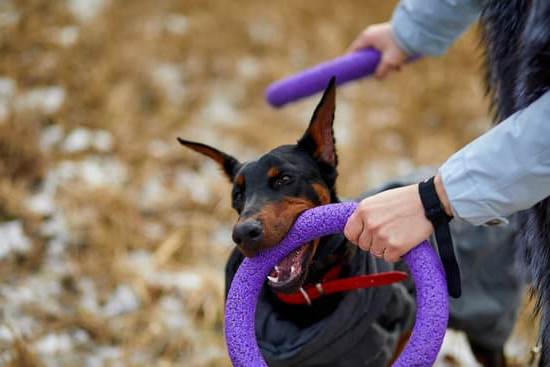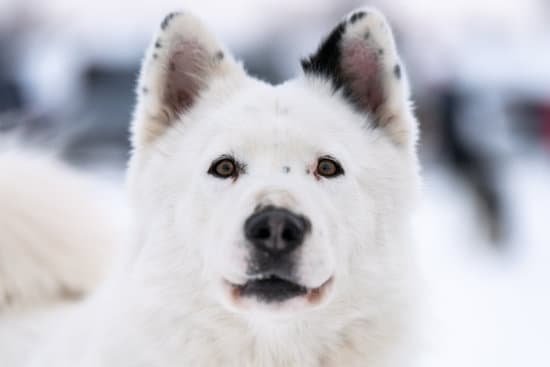The Space Race was a period of intense competition between the United States and the Soviet Union during the Cold War era, marked by groundbreaking advancements in space exploration. One of the most fascinating aspects of this race was the usage of animals for space missions, particularly dogs. The question arises: how did they train dogs to go into space?
In the early days of space exploration, scientists and researchers sought to understand the effects of space travel on living organisms before risking human lives. Dogs were chosen for these missions due to their physiological similarities to humans and their trainable nature. The selection process for these canine astronauts involved rigorous criteria to ensure only the fittest and most suitable candidates were chosen.
Once selected, the dogs underwent a series of conditioning and basic training exercises to prepare them for the challenges of space travel. From learning how to respond to commands in a weightless environment to enduring high levels of noise and vibrations during launch, these training sessions were crucial in preparing them for their historic journey beyond Earth’s atmosphere.
Selection of Dogs for Space Exploration
The selection process for dogs chosen to be sent into space during the early years of space exploration was a meticulous one. When scientists and researchers were looking for suitable candidates, they focused on specific criteria to ensure the success of these missions. Here are some important factors considered when selecting dogs for space exploration:
- Physical fitness and health: Dogs selected for space missions had to be in top physical condition to endure the stresses of space travel. They underwent thorough medical examinations to ensure they were healthy enough for the journey.
- Temperament and behavior: Dogs chosen for space missions needed to exhibit calm and adaptable behavior. They had to be able to handle confinement, training routines, and unfamiliar environments with ease.
- Size and breed: Smaller breeds were preferred for early space missions due to limited spacecraft size. Additionally, certain breeds were selected based on their resilience and adaptability to different conditions.
Understandably, the training process itself was a crucial aspect of preparing these dogs for their historic journey into space. But how did they train dogs to go into space? Let’s delve into the conditioning and basic training techniques that were implemented to ensure the success of these canine astronauts in their groundbreaking mission.
- Physical conditioning: Dogs underwent physical conditioning exercises such as running, agility drills, and strength training to build up their stamina and endurance levels.
- Behavioral training: Dogs were trained to follow commands from handlers both on Earth and in simulated zero gravity environments. This included tasks such as responding to cues, staying calm under pressure, and adapting quickly to new situations.
- Exposure to spacecraft equipment: Dogs were familiarized with the sounds, smells, and sensations associated with spacecraft equipment so they would feel comfortable during launch and while onboard the spacecraft.
Overall, the selection of dogs for space exploration involved a rigorous process that took into account various factors essential for a successful mission. Through careful consideration of physical fitness, behavior, breed characteristics, and specialized training techniques, these canine pioneers paved the way for human space exploration advancements yet to come.
Conditioning and Basic Training for Space Travel
The process of training dogs for space travel was a crucial component of the early space exploration efforts during the Space Race. In order to understand how did they train dogs to go into space, it is essential to delve into the conditioning and basic training methods used for these canine cosmonauts.
One of the key aspects of preparing dogs for space travel was getting them accustomed to the confined spaces within spacecraft and the sensations of takeoff, weightlessness, and re-entry. This conditioning involved exposing the dogs to simulated launch and flight scenarios in order to acclimatize them to the unique challenges of space travel. Through a series of carefully designed exercises, the dogs were taught to remain calm and focused during these high-stress situations.
Furthermore, basic training for space travel also included familiarizing the dogs with the special equipment they would be interfacing with during their mission such as harnesses, communication devices, and feeding systems. This ensured that the dogs were not only physically prepared for spaceflight but also mentally ready to interact with their surroundings in a weightless environment. The comprehensive training regimen aimed to create a seamless transition for these canine astronauts from Earth to outer space.
| Training Techniques | Details |
|---|---|
| Simulated Launch Scenarios | Dogs were exposed to simulated launch sequences to prepare them for the sensations of takeoff. |
| Familiarization with Equipment | Dogs were trained to interact with specialized equipment used in spacecraft during their mission. |
| Stress Management Exercises | Training included methods to help dogs remain calm and focused during stressful situations encountered in space. |
Advanced Training Techniques for Zero Gravity Environment
After the selection process, dogs chosen for space exploration undergo advanced training techniques to prepare them for the zero gravity environment of outer space. Training for zero gravity is crucial to ensure the safety and well-being of the canine astronauts during their mission. Here are some of the techniques used to train dogs for zero gravity:
- Parabolic Flights: Dogs experience short periods of weightlessness on parabolic flights, where an aircraft follows a parabolic flight path to create brief periods of zero gravity. This helps dogs adapt to the feeling of weightlessness and learn how to move in a microgravity environment.
- Underwater Training: Dogs are also trained in underwater environments to simulate the lack of gravity experienced in space. They learn how to navigate and move effectively without the assistance of gravity, preparing them for their space mission.
- Suspension Training: Dogs may undergo suspension training, where they are suspended in harnesses that mimic weightlessness. This helps dogs develop muscle strength and coordination needed for zero gravity environments.
These advanced training techniques ensure that dogs are fully prepared for the challenges they will face in space. By simulating zero gravity conditions on Earth, trainers can help canine astronauts adjust to the unique environment of space travel and increase their chances of a successful mission. Through these specialized training methods, dogs can overcome obstacles and adapt to new situations with confidence as they embark on their journey into space.
With proper conditioning and advanced training techniques, dogs can successfully acclimate to the zero gravity environment of outer space. Their ability to adapt and thrive in challenging conditions has paved the way for numerous scientific advancements in human space exploration. The legacy of these courageous space dogs continues to inspire future generations of scientists, astronauts, and animal enthusiasts alike, highlighting their important contribution to the history of space exploration.
Simulated Space Missions and Desensitization to Stressful Situations
Simulation Training
To prepare dogs for the mental and physical challenges of space travel, simulated space missions were a crucial part of their training. Dogs were placed in mock spacecraft and subjected to various scenarios that they might encounter during an actual mission. This included loud noises, vibrations, and sudden changes in gravity conditions. By exposing the dogs to these stressors in a controlled environment, trainers could assess their reactions and help them learn how to remain calm and focused under pressure.
Desensitization Techniques
In addition to simulation training, desensitization techniques were also employed to help dogs cope with stressful situations. Trainers gradually exposed dogs to increasing levels of stressors, such as confined spaces or isolation, in order to build up their tolerance over time. Through positive reinforcement and rewards for good behavior, dogs learned to associate challenging situations with positive outcomes. This conditioning was essential for ensuring that the dogs remained calm and composed during the rigors of space travel.
Collaboration With Behavioral Experts
Trainers worked closely with behavioral experts to develop individualized desensitization plans for each dog based on their unique personalities and needs. By taking into account factors such as temperament and past experiences, trainers were able to tailor their approach to ensure the success of each canine astronaut. The collaboration between trainers and behavioral experts was instrumental in preparing the first dogs for the groundbreaking journey into space.
Overall, simulated space missions and desensitization techniques played a vital role in preparing dogs for space travel. Through careful planning, collaboration, and a commitment to the well-being of the animals, trainers were able to successfully acclimate these brave canines to the challenges of outer space. The legacy of these space dogs continues to inspire future generations of astronauts and serves as a testament to the incredible bond between humans and animals in the pursuit of knowledge beyond our planet.
Familiarization With Spacecraft Equipment and Environment
Dogs played a crucial role in the early days of space exploration, particularly during the Space Race between the United States and the Soviet Union. One might wonder, how did they train dogs to go into space? Well, familiarization with spacecraft equipment and environment was a key aspect of preparing these canine cosmonauts for their missions.
To prepare dogs for space travel, trainers exposed them to various components of the spacecraft and simulated the conditions they would experience in orbit. This involved acclimating the dogs to confined spaces, loud noises, vibrations, and weightlessness. By gradually introducing them to these elements, the dogs were able to adjust and remain calm during their journey into space.
Furthermore, trainers also familiarized the dogs with the equipment they would encounter onboard the spacecraft. This included wearing specialized suits or harnesses, being secured in crates or seats for launch and re-entry, and interacting with monitoring devices. Through positive reinforcement techniques and rewards, dogs learned to associate these items with comfort and safety, making them more cooperative during their time in space.
| Aspect | Description |
|---|---|
| Spacecraft Equipment | Dogs were trained to wear specialized suits or harnesses for space travel. |
| Confined Spaces | Trainers acclimated dogs to tight spaces within the spacecraft. |
| Monitoring Devices | Dogs interacted with devices that monitored their vital signs during the mission. |
Medical Preparations and Monitoring for Space Travel
Pre-Flight Medical Examinations
Before sending dogs into space, extensive medical examinations were conducted to ensure that the animals were physically fit for the journey. Veterinarians and scientists closely monitored the health of the dogs, checking for any underlying conditions that may jeopardize their well-being in space. These examinations included tests for heart function, respiratory health, and overall physical fitness. Any potential issues were addressed and treated before the dogs were cleared for space travel.
Monitoring Vital Signs During Space Missions
Once in space, it was essential to continuously monitor the vital signs of the dogs to ensure their well-being throughout the mission. Special equipment was developed to track parameters such as heart rate, blood pressure, temperature, and oxygen levels in real-time.
This data was transmitted back to Earth for analysis by experts who could assess the health and comfort of the animals in space. Regular check-ins helped ensure that any potential issues could be addressed promptly to guarantee a successful mission.
Post-Mission Health Monitoring and Rehabilitation
After returning from space missions, the dogs underwent further medical evaluations to assess the impact of space travel on their bodies. Post-mission rehabilitation programs were designed to help them readjust to Earth’s gravity and recover from any physical or psychological effects of their time in space.
Through these comprehensive medical preparations and monitoring procedures, scientists gained valuable insights into how living beings adapt to the challenges of space travel – paving the way for future human missions beyond our planet.
Launch and Mission Success
The successful launch and mission of the first dogs in space marked a significant milestone in the history of space exploration. These canine pioneers played a crucial role in paving the way for human space travel, demonstrating that living beings could withstand the rigors of space travel and survive in microgravity environments. But how did they train dogs to go into space?
Before the historic launch, the dogs underwent extensive conditioning and basic training to prepare them for the challenges of space travel. They were trained to remain calm in confined spaces, follow commands from their handlers, and adapt to wearing specialized suits and equipment necessary for their journey. Additionally, they were exposed to loud noises, vibrations, and other sensory stimuli to simulate the conditions they would experience during launch and flight.
As part of their advanced training techniques, the dogs were familiarized with zero gravity environments through parabolic flights and specialized chambers that simulated weightlessness. This helped them adjust to moving in microgravity conditions and develop the necessary coordination skills to navigate their spacecraft during the mission. The dogs also underwent rigorous physical fitness regimens to ensure their health and endurance for the duration of their spaceflight.
Legacy of Space Dogs and Impact on Human Space Exploration
The legacy of space dogs in the realm of space exploration is one that has left an indelible mark on the history of human spaceflight. These courageous canine pioneers paved the way for human astronauts to follow in their pawprints, testing the limits of space travel and advancing our understanding of the challenges that come with venturing into the unknown. But how did they train dogs to go into space?
Through meticulous selection processes, rigorous conditioning and training, and groundbreaking technological advancements, these remarkable animals were prepared for the daunting mission ahead. From basic obedience training to simulated zero gravity environments, every step was taken to ensure their safety and readiness for the demands of space travel. The dedication and expertise of trainers and scientists were key in preparing these dogs for their journey beyond Earth’s atmosphere.
As we reflect on the incredible achievements of these pioneering space dogs, we cannot overlook their lasting impact on human space exploration. Their contributions have not only expanded our knowledge of living organisms in space but have also inspired future generations to continue pushing the boundaries of what is possible in outer space.
The sacrifices made by these furry trailblazers have not been forgotten, and their legacy will forever be etched in the history books as a testament to the bravery and resilience of all creatures – both human and animal – who dare to reach for the stars.
Frequently Asked Questions
How Did They Train Laika the Space Dog?
Laika, the space dog, was trained for the Sputnik 2 mission by being placed in smaller and smaller cages to simulate the confines of a spacecraft. She was also taught to eat a special high-nutrient gel-like food.
Is Laika’s Body Still in Space?
Unfortunately, Laika’s body is no longer in space. After her death in orbit due to overheating, her capsule re-entered Earth’s atmosphere and disintegrated along with her remains.
How Long Did Laika Survive in Space?
Laika survived in space for approximately a few hours before succumbing to overheating on November 3, 1957. Despite the short duration of her journey, she played a crucial role in advancing human understanding of space travel’s effects on living beings.

Welcome to the blog! I am a professional dog trainer and have been working with dogs for many years. In this blog, I will be discussing various topics related to dog training, including tips, tricks, and advice. I hope you find this information helpful and informative. Thanks for reading!





